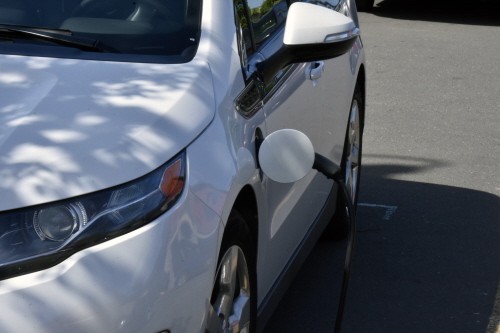
Existing residential charge points typically take all night to recharge an electric vehicle’s battery, while so-called fast charge stations are relatively few and far between, and can still take at least 30 minutes.
Despite improvements in battery technology, including new lithium-sulphur and solid state devices in development, the problem cannot be solved by improvements in battery chemistry alone, according to Dr Teng Long at Cambridge University.
Instead, battery recharging needs to be made quicker and more convenient, said Long, who is leading an EPSRC-funded project to improve wireless charging technology for electric cars.
By using so-called Inductive Power Transfer, in which power is transferred from a transmitter coil on the ground to a receiver coil on the vehicle via time-varying magnetic fields, cars could be charged by small amounts, but much more frequently, said Long.
“Currently if you want to refuel your car with conventional fuels, you have to drive to a petrol station,” said Long. “But if you decentralise that system it could become part of your daily drive, with wireless charging spots embedded in the road at traffic lights, for example, or at parking slots.”
The project, which also involves McLaren Group, Advanced Technology & Materials, Dynex Semiconductor, and the University of Auckland, is aiming to improve wireless charging technology, firstly by developing more robust coils.
Existing coils are typically made of ceramic compounds such as ferrites, which are quite brittle and fragile, said Long. “It’s not a good idea to have such a fragile coil embedded in the road, where there will be wheels driving over it,” he said.
So the researchers are aiming to develop coils using a nanocrystalline alloy, which they believe will prove to be much more robust than existing ceramic coils.
The researchers also hope to improve the design of the power conversion system, reducing the number of individual components, in a bid to cut costs and increase robustness.
Finally, they hope to improve the technology’s ability to tolerate misalignments between the car and the wireless charging spot, said Long.
In existing systems, even a slight misalignment of around 10 per cent can halve the system’s efficiency, he said. “We all know that in real-life you cannot park that precisely, so some misalignment cannot be completely avoided, so we need to improve on that,” he said.
By the end of the two-year project, the research team plan to build and test a 7.7kW prototype system, he said.





Hard hat mounted air curtain adds layer of protection
Something similar was used by miners decades ago!